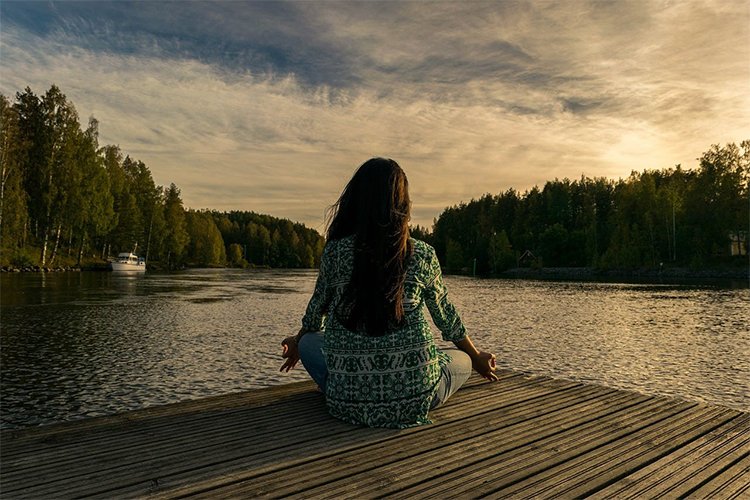
In the fast-paced and demanding world we live in, the concept of mindfulness has proven to be an effective antidote to the stress and chaos of everyday life. Mindful living is not just a practice, but an art – an art that allows us to walk the path to a balanced lifestyle with grace and intention. In this exploration, we delve into the essence of the art of mindful living, understand its principles, and discover how it can change our lives for the better.
At its core, mindful living is about being fully present in the present moment, free from judgment and distraction. This is about cultivating a heightened awareness of our thoughts, feelings and our surroundings. Mindfulness invites us to observe our experiences with openness and curiosity, fostering a deep connection with ourselves and the world around us.

Mindful living begins with a conscious surrender to the present moment. Instead of dwelling on the past or worrying about the future, embrace the current experience with full attention. Whether it’s savoring the flavors of a meal, appreciating the beauty of nature, or engaging in a conversation, total presence increases the richness of life.
The art of mindfulness encourages us to observe our thoughts and feelings without judgment. Instead of labeling experiences as good or bad, right or wrong, approach them neutrally. This non-judgmental attitude promotes self-compassion and reduces the impact of negative self-talk.
Mindful living means acknowledging and accepting the reality of the present moment, even if it differs from our expectations. Cultivate the ability to let go of attachment to outcomes and surrender to the ebbs and flows of life. Acceptance does not mean passivity; Instead, it enables us to respond to situations with greater clarity and calm.
The breath serves as an anchor for the present moment. Deep, conscious breathing is a cornerstone for a mindful life and promotes relaxation and concentration. Additionally, cultivating body awareness—tuning into physical sensations without attachment—strengthens the mind-body connection and promotes a sense of groundedness.

Expand mindfulness beyond meditation to everyday activities. Whether you eat, walk, or work, bring intention and awareness to every action. This transforms routine tasks into opportunities for presence and engagement, contributing to a more balanced and fulfilling life.
In a world driven by deadlines and schedules, incorporating mindfulness into time management can be transformative. Instead of rushing into tasks, approach them with a sense of presence. Prioritize activities that align with your values and contribute to your overall well-being. Mindful time management allows for greater efficiency and a reduction in the stress that comes with constant hustle and bustle.
Achieving a balanced lifestyle requires a careful approach to work and private life. Set boundaries that allow for targeted work phases and conscious moments of relaxation. Mindful transitions between work and free time help prevent burnout and contribute to overall life satisfaction.
The ubiquity of technology in our lives can be a double-edged sword. While it offers convenience and connectivity, it can also lead to constant distraction and information overload. Practice digital mindfulness by limiting screen time, turning off notifications, and engaging in activities without constant connection. This promotes a more mindful use of technology and promotes mental clarity.
The act of eating is often rushed and overlooked in our busy lives. Mindful eating invites us to savor every bite and appreciate the taste, texture and aroma of our food. Pay attention to hunger and fullness signals and develop gratitude for the nutrients your meal provides. This practice not only improves the dining experience but also promotes a healthier relationship with food.
Navigating the subtletiesen of relationships requires a mindful approach. Be fully present in conversations, listen with empathy, and communicate with intention. Develop awareness of your own emotions and reactions, allowing for more thoughtful responses in interactions. Mindful relationships contribute to a supportive and harmonious social environment.

While mindful living can be integrated into various aspects of our daily lives, mindfulness meditation serves as a foundational practice. Take time each day to sit still, focus on your breath, and develop nonjudgmental awareness of thoughts and sensations. Meditation is a training ground for the mind and strengthens the ability to be mindful in all areas of life.
The path to living a mindful life is not without challenges. Distractions, habitual thought patterns, and the demands of a busy life can create obstacles. However, if you approach these challenges with a mindful attitude, they can transform into opportunities for growth.
When faced with challenges, take a mindfulness-based problem-solving approach. Instead of reacting impulsively, take a step back, observe the situation with an open mind, and consider alternative perspectives. Mindful problem solving requires a calm and focused mindset that is better able to find effective solutions.
Patience is a virtue that combines seamlessly with living a mindful life. In a world that often values speed and immediacy, cultivating patience allows us to meet challenges with calm demeanor. Practice patience in moments of frustration and recognize that many aspects of life evolve at their own pace.
Regularly reflect on your journey to a mindful life. Celebrate moments of progress and recognize areas for improvement. Mindful reflection promotes self-awareness and provides insights into the thought and behavior patterns that impact your well-being.
When individuals embrace the art of mindful living, the positive impact extends beyond personal well-being. Mindful people contribute to a more compassionate and harmonious society. The ripple effect of mindfulness reaches communities, workplaces and relationships, promoting collective change towards greater understanding, empathy and balance.
In summary, the art of mindful living is a transformative journey that spans a lifetime. It is a path to a balanced lifestyle that integrates presence, intention and awareness into every aspect of our existence. By embracing the principles of present moment awareness, nonjudgmental observation, acceptance, deep breathing, and mindful action and integrating these into various facets of our lives, we can navigate the complexities of modern life with grace and equanimity.
Remember that the art of mindful living is not about perfection, but rather about progress. Every moment of mindfulness, no matter how small, contributes to a more balanced and fulfilling life. On this journey, may you find joy in the simplicity of every breath, the richness of every experience, and the deep sense of balance that comes from living a life of mindful awareness.